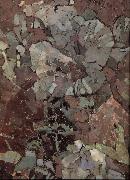Wholesale Oil Painting No Minimum |
|||||||||||
|
|
|||||||||||

|
|||||||||||
|
|
|
||||||||
Mikhail VrubelRussian Symbolist Painter, 1856-1910 Russian painter and draughtsman. He was a pioneer of modernism, and his highly innovative technique broke with the traditions of the Academy of Arts in St Petersburg, where he had been a brilliant student; at the same time he felt dissociated from the social consciousness of The Wanderers. |
||||||||
|
|
||||||||
The Seated Demon
The Seated Demon Painting ID:: 31187 |
mk72
1890
Sketch for the 1890 painting of the same title,now in the Tretyakov Gallery
Watercolor,white,and graphite on paper
13.2x27cm
Tretyakov Gallery Moscow
mk72 1890 Sketch for the 1890 painting of the same title,now in the Tretyakov Gallery Watercolor,white,and graphite on paper 13.2x27cm Tretyakov Gallery Moscow |
|||||||
|
|
||||||||
Arnold BocklinSwiss 1827-1901 Arnold Bocklin Locations Arnold Bocklin was born on Oct. 16, 1827, in Basel. He attended the Dusseldorf Academy (1845-1847). At this time he painted scenes of the Swiss Alps, using light effects and dramatic views subjectively to project emotional moods into the landscape. In 1848 this romantic introspection gave way to plein air (open-air) objectivity after he was influenced by Camille Corot, Eugene Delacroix, and the painters of the Barbizon school while on a trip to Paris. But after the February and June revolutions Bocklin returned to Basel with a lasting hatred and disgust for contemporary France, and he resumed painting gloomy mountain scenes. In 1850 Bocklin found his mecca in Rome, and immediately his paintings were flooded by the warm Italian sunlight. He populated the lush southern vegetation, the bright light of the Roman Campagna, and the ancient ruins with lonely shepherds, cavorting nymphs, and lusty centaurs. These mythological figures rather than the landscapes became Bocklins primary concern, and he used such themes as Pan Pursuing Syrinx (1857) to express the polarities of life: warm sunshine contrasts with cool, moist shade, and the brightness of womans spirituality contrasts with mans dark sensuality. When Bocklin returned to Basel with his Italian wife, he completed the painting which brought him fame when the king of Bavaria purchased it in 1858: Pan among the Reeds, a depiction of the Greek phallic god with whom the artist identified. He taught at the Academy of Art in Weimar from 1860 to 1862, when he returned to Rome. Called to Basel in 1866, he painted the frescoes and modeled the grotesque masks for the facade of the Basel Museum. Bocklin resided in Florence from 1874 until 1885, and this was his most active period. He continued to explore the male-female antithesis and painted religious scenes, allegories of Natures powers, and moody studies of mans fate. He ceased working with oils and began experimenting with tempera and other media to obtain a pictorial surface free of brushstrokes. Bocklin spent the next 7 years mostly in Switzerland, with occasional trips to Italy; he devoted much of his energy to designing an airplane. Following a stroke in 1892, he returned to Italy, bought a villa in Fiesole, and died there on Jan. 16, 1901. Many of his late works depict nightmares of war, plague, and death. |
||||||||
|
|
||||||||
|
|
The Seated Demon
The Seated Demon Painting ID:: 31192 |
mk72
1890
mk72 1890 |
||||||
|
|
||||||||
|
Arnold Bocklin Swiss 1827-1901 Arnold Bocklin Locations Arnold Bocklin was born on Oct. 16, 1827, in Basel. He attended the Dusseldorf Academy (1845-1847). At this time he painted scenes of the Swiss Alps, using light effects and dramatic views subjectively to project emotional moods into the landscape. In 1848 this romantic introspection gave way to plein air (open-air) objectivity after he was influenced by Camille Corot, Eugene Delacroix, and the painters of the Barbizon school while on a trip to Paris. But after the February and June revolutions Bocklin returned to Basel with a lasting hatred and disgust for contemporary France, and he resumed painting gloomy mountain scenes. In 1850 Bocklin found his mecca in Rome, and immediately his paintings were flooded by the warm Italian sunlight. He populated the lush southern vegetation, the bright light of the Roman Campagna, and the ancient ruins with lonely shepherds, cavorting nymphs, and lusty centaurs. These mythological figures rather than the landscapes became Bocklins primary concern, and he used such themes as Pan Pursuing Syrinx (1857) to express the polarities of life: warm sunshine contrasts with cool, moist shade, and the brightness of womans spirituality contrasts with mans dark sensuality. When Bocklin returned to Basel with his Italian wife, he completed the painting which brought him fame when the king of Bavaria purchased it in 1858: Pan among the Reeds, a depiction of the Greek phallic god with whom the artist identified. He taught at the Academy of Art in Weimar from 1860 to 1862, when he returned to Rome. Called to Basel in 1866, he painted the frescoes and modeled the grotesque masks for the facade of the Basel Museum. Bocklin resided in Florence from 1874 until 1885, and this was his most active period. He continued to explore the male-female antithesis and painted religious scenes, allegories of Natures powers, and moody studies of mans fate. He ceased working with oils and began experimenting with tempera and other media to obtain a pictorial surface free of brushstrokes. Bocklin spent the next 7 years mostly in Switzerland, with occasional trips to Italy; he devoted much of his energy to designing an airplane. Following a stroke in 1892, he returned to Italy, bought a villa in Fiesole, and died there on Jan. 16, 1901. Many of his late works depict nightmares of war, plague, and death. The Seated Demon mk72 1890 |
||||||||
|
|
||||||||
|
Prev Next
|
||||||||
|
|
||||||||
|
Related Paintings to Arnold Bocklin :. |
||||||||
|
|
||||||||
|
CONTACT US |


